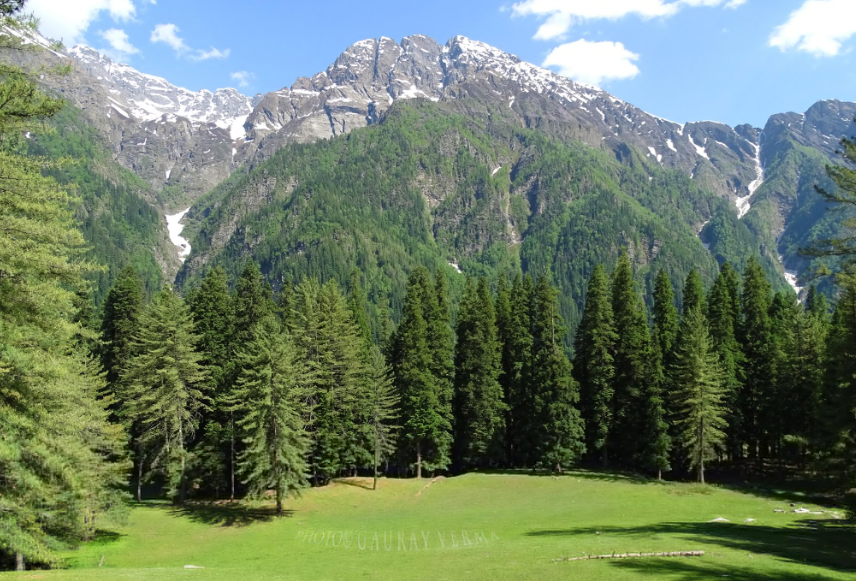Welcome to the mesmerizing realm of Bhutan National Forest, a haven for nature enthusiasts and a testament to the majestic beauty of Pinus wallichiana. Nestled in the heart of Bhutan, this enchanting forest captivates visitors with its lush greenery, diverse flora and fauna, and deep cultural significance. In this article, we will delve into the wonders of Bhutan National Forest, exploring its significance, conservation efforts, tourism opportunities, and the challenges it faces.
Understanding Bhutan National Forest
Overview of Pinus wallichiana Forest
The Bhutan National Forest is predominantly composed of the magnificent Pinus wallichiana, also known as the Bhutan pine. This coniferous species, native to the Himalayan region, creates a stunning landscape with its tall, slender trunks and graceful evergreen needles. The forest covers vast expanses, offering a breathtaking view of these towering pines that sway with the gentle mountain breeze.
Importance of Bhutan National Forest
The Bhutan National Forest plays a vital role in preserving the biodiversity of the region. It serves as a natural habitat for numerous plant and animal species, including rare and endangered ones. The forest acts as a watershed, supplying water to the surrounding areas and contributing to the overall ecological balance. Additionally, it acts as a carbon sink, mitigating climate change and promoting environmental sustainability.
Flora and Fauna in the Pinus wallichiana Forest
The Pinus wallichiana forest is teeming with a rich variety of flora and fauna. Among the lush greenery, you can find rhododendrons, junipers, and numerous medicinal plants. The forest is also home to a diverse range of wildlife, including Himalayan black bears, musk deer, and various species of birds. Exploring the depths of Bhutan National Forest offers a glimpse into the intricate web of life thriving in this pristine ecosystem.
Conservation Efforts and Sustainable Practices
Recognizing the ecological importance of the Bhutan National Forest, the Bhutanese government and local communities have implemented robust conservation efforts. These initiatives focus on sustainable forest management, promoting reforestation, and protecting endangered species. Bhutan's commitment to maintaining at least 60% forest cover within its territory showcases the nation's dedication to preserving its natural heritage.
Cultural Significance of Bhutan National Forest
Beyond its ecological significance, the Bhutan National Forest holds deep cultural value for the Bhutanese people. Bhutanese folklore and traditions are interwoven with the forest, with ancient tales of mythical creatures and spirits residing within its depths. The forest is considered sacred and is often the site of religious ceremonies, providing a serene backdrop for spiritual contemplation.
Tourism and Recreation Opportunities
Bhutan National Forest offers an array of tourism and recreational opportunities for visitors. Nature lovers can embark on scenic hikes, immersing themselves in the tranquility of the forest and relishing the sights and sounds of nature. Trekking trails wind through the forest, taking adventurers on unforgettable journeys to pristine lakes, hidden waterfalls, and breathtaking viewpoints. Camping facilities are available for those seeking an immersive experience, allowing them to spend nights under a blanket of stars, surrounded by the soothing whispers of the pines.
For wildlife enthusiasts, the Bhutan National Forest provides ample opportunities for wildlife spotting and birdwatching. Guided tours offer the chance to observe elusive species like the takin, Bhutan's national animal, and the vibrant monal pheasant, adorned with its kaleidoscope of colors. The forest's serene ambiance and abundant wildlife create an unforgettable experience for nature enthusiasts.
Challenges and Threats to the Bhutan National Forest
Despite its significance and conservation efforts, the Bhutan National Forest faces various challenges and threats. Climate change poses a risk to the delicate ecosystem, with rising temperatures and changing precipitation patterns affecting the growth and survival of plant species. Illegal logging and poaching also remain concerns, demanding constant vigilance and enforcement of regulations. Balancing the need for economic development with sustainable practices is an ongoing challenge, as the pressure for resources and infrastructure development increases.
Conclusion
Bhutan National Forest stands as a testament to Bhutan's commitment to environmental preservation and sustainable practices. Its majestic Pinus wallichiana forest, rich biodiversity, and cultural significance make it a true gem in the heart of the Himalayas. Through conservation efforts, sustainable tourism, and community involvement, Bhutan continues to protect this invaluable natural heritage for future generations to cherish and enjoy.
FAQs
- Can I visit Bhutan National Forest throughout the year?
Yes, Bhutan National Forest can be visited year-round. However, it is recommended to check the weather conditions and plan accordingly.
- Are there any accommodation options within the forest?
While there are no accommodations within the forest itself, there are hotels, guesthouses, and camping facilities available in nearby towns and villages.
- What permits or permissions are required to visit the forest?
Visitors to Bhutan, including the national forest, require a valid visa and a licensed tour operator to arrange their travel. The tour operator will assist in obtaining the necessary permits.
- Are there any guided tours available in the forest?
Yes, guided tours are available for exploring the Bhutan National Forest. Local guides provide valuable insights into the flora, fauna, and cultural significance of the forest.
- Can I engage in activities like fishing or hunting in the forest?
No, fishing and hunting are strictly prohibited in the Bhutan National Forest. Respecting the conservation efforts and regulations is crucial to preserving the forest's integrity.
References
- Bhutan Ministry of Agriculture and Forests. (n.d.). Retrieved from https://www.moaf.gov.bt/
- Tourism Council of Bhutan. (n.d.). Retrieved from https://www.tourism.gov.bt/
